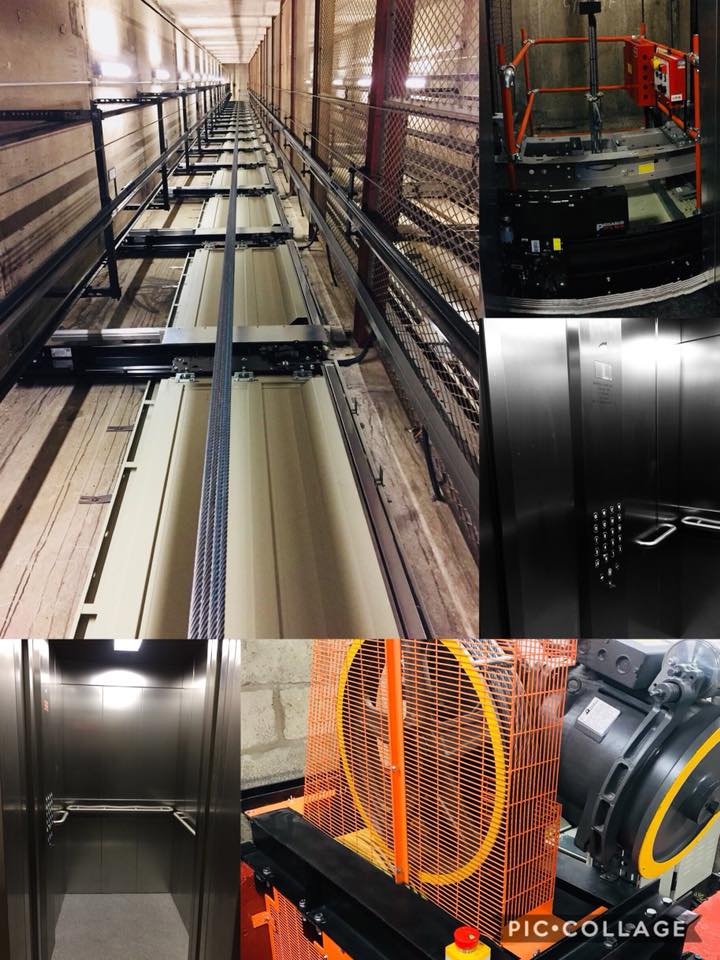Contrast Disabled Platform Lifts Prices UK: Affordable Options for Every Need
Contrast Disabled Platform Lifts Prices UK: Affordable Options for Every Need
Blog Article
Exploring the Globe of Lifts: Common Issues Encountered by Numerous Lift Systems
As we navigate with the vertical transport systems of modern-day structures, elevators stand out as an indispensable element of our day-to-day lives. From hydraulic elevators to grip systems and machine-room-less layouts, each lift type comes with its collection of common problems.
Hydraulic Lifts
Hydraulic elevators, commonly preferred for low-rise buildings, use fluid stress to regulate the movement of the elevator auto (lift repair companies). This mechanism includes a hydraulic pump pressing oil right into a cylinder, creating the elevator to move in the preferred instructions. While hydraulic lifts are known for their smooth and peaceful procedure, they do include their very own collection of usual issues
One prevalent trouble with hydraulic elevators is oil leak. In addition, issues with the control system, such as faulty valves or a malfunctioning pump, can create disturbances in the elevator's motion.
Normal upkeep and timely repair services are important to ensure the smooth performance of hydraulic lifts. By resolving these usual issues proactively, building proprietors can decrease downtime and make sure the security and effectiveness of their upright transportation system.
Grip Elevators
When considering vertical transport systems in structures, an additional common kind apart from hydraulic elevators is the traction lift. Traction elevators run making use of a system of ropes and weights that move the lift auto by grasping onto the hoist ropes. This system permits smoother and faster upright transportation compared to hydraulic systems.
Among the typical issues encountered by traction lifts is rope wear. The consistent activity of the ropes within the grip system can result in tear and use in time, possibly triggering the elevator to breakdown or end up being hazardous for usage. Routine inspections and upkeep of the ropes are necessary to ensure the lift's appropriate performance and security.
An additional problem that grip elevators might experience is connected to the control system. Issues with the control system can lead to problems such as irregular movement, hold-ups in response times, or even full closures. Routine testing and maintenance of the control system are critical to stop such problems and ensure the lift's reliability.
Machine-Room-Less (MRL) Elevators

Among the essential components of MRL lifts is the small gearless traction machine that is installed within the hoistway. This equipment effectively drives the elevator car without the demand for large equipment located in standard grip lifts. Additionally, MRL lifts normally use a weight system to balance the car, more improving their energy performance.
Despite their benefits, MRL lifts may deal with challenges connected to repair and maintenance as a result of the confined area lift companies in London for tools installation. Availability for servicing parts within the shaft can be limited, requiring specialized training for technicians. Proper maintenance timetables and normal evaluations are vital to ensure the continued smooth operation of MRL lifts.
Overloading and Weight Limit Issues
Overloading and weight limit problems are essential worries in lift operations. Elevator producers design lifts with specific weight capacities to make certain guest safety and security and tools durability.
When lifts are strained, it places extreme strain on the electric motor, wires, and various other elements, potentially creating breakdowns or malfunctions. If they detect excess weight, safety and security systems such as sensors and overload sensing units are in location to prevent elevators from moving. In addition, surpassing weight limits can bring about boosted energy intake we maintain lifts and deterioration on the lift system.
To alleviate overwhelming issues, constructing managers should plainly display weight limitations in elevators and inform residents on the significance of adhering to these limitations - lift repair companies. Regular upkeep checks by certified service technicians can also aid guarantee that lifts are operating within risk-free weight parameters. By resolving overloading and weight limitation concerns proactively, building owners can boost elevator security and performance
Electrical System Failings
Surpassing weight limits in elevators can not only lead to mechanical problems however likewise potentially contribute to electrical system failures within the lift facilities. Electric system failings are an important problem in disabled platform lifts prices uk lift procedure, as they can trigger unforeseen shutdowns, malfunctions, or even security dangers.
Routine upkeep and assessments are important to identify and resolve prospective electrical problems quickly, making certain the risk-free and efficient operation of lift systems. By sticking to weight limitations and conducting regular electrical system checks, building proprietors can reduce the threat of electrical failings in lifts.
Final Thought

Hydraulic elevators, usually favored for low-rise structures, utilize fluid pressure to manage the activity of the elevator car.When taking into consideration upright transport systems in structures, another usual type apart from hydraulic elevators is the grip elevator. Grip elevators run using a system of ropes and weights that move the lift vehicle by clutching onto the hoist ropes. Unlike standard elevators that need a different device area to house the devices, MRL lifts integrate many of the components within the shaft, removing the need for a committed device area.In conclusion, elevators encounter common problems such as hydraulic breakdowns, grip system failings, and electrical system issues.
Report this page